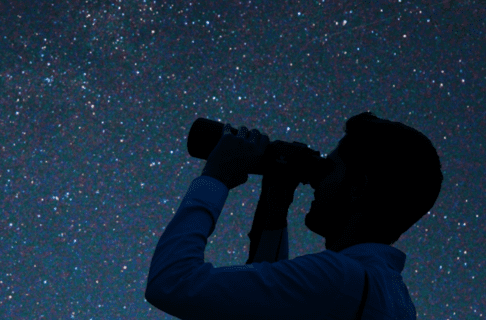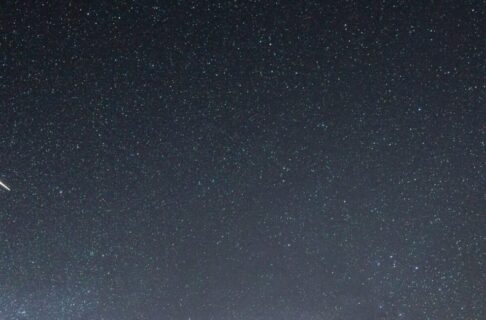Posted on: Monday July 6, 2020
There’s a pretty bright comet in the morning sky right now, with the poetic name of NEOWISE C/2020 F3. The NEOWISE satellite is the Near Earth Object Wide-field Infrared Survey Explorer, a NASA satellite that looks for comets and asteroids that come close to Earth. NEOWISE finds so many new objects that they just get a serial number instead of a proper name. For the purposes of this article, we’ll just call the comet “Neo”.
“Neo” is a ball of ice and rock orbiting the Sun. It passed closest to the Sun on July 3, and all of the heat has melted some of the ice and blown the material back into a nice tail. It seems like this is the comet’s first trip through the inner solar system, and so we don’t know exactly how it will behave – often, first-time comets like this either don’t survive their close approach to the Sun, or they do but don’t brighten as much as we expect. Several recent comets have turned out to be duds after some initial rosy predictions, so it’s nice when things go the other way.
We should characterize what we mean when we say, “a pretty bright comet”. “Pretty bright” in this context means you should be able to spot it in binoculars or take a picture of it if you have a decent camera on a tripod. Most comets are only visible in a telescope, and the public don’t even hear about them.
As of July 7, 2020, “Neo” is visible in binoculars and the unaided eye, and sports a short tail that shows up in amateur photographs. It’s definitely the nicest comet we’ve had in several years.
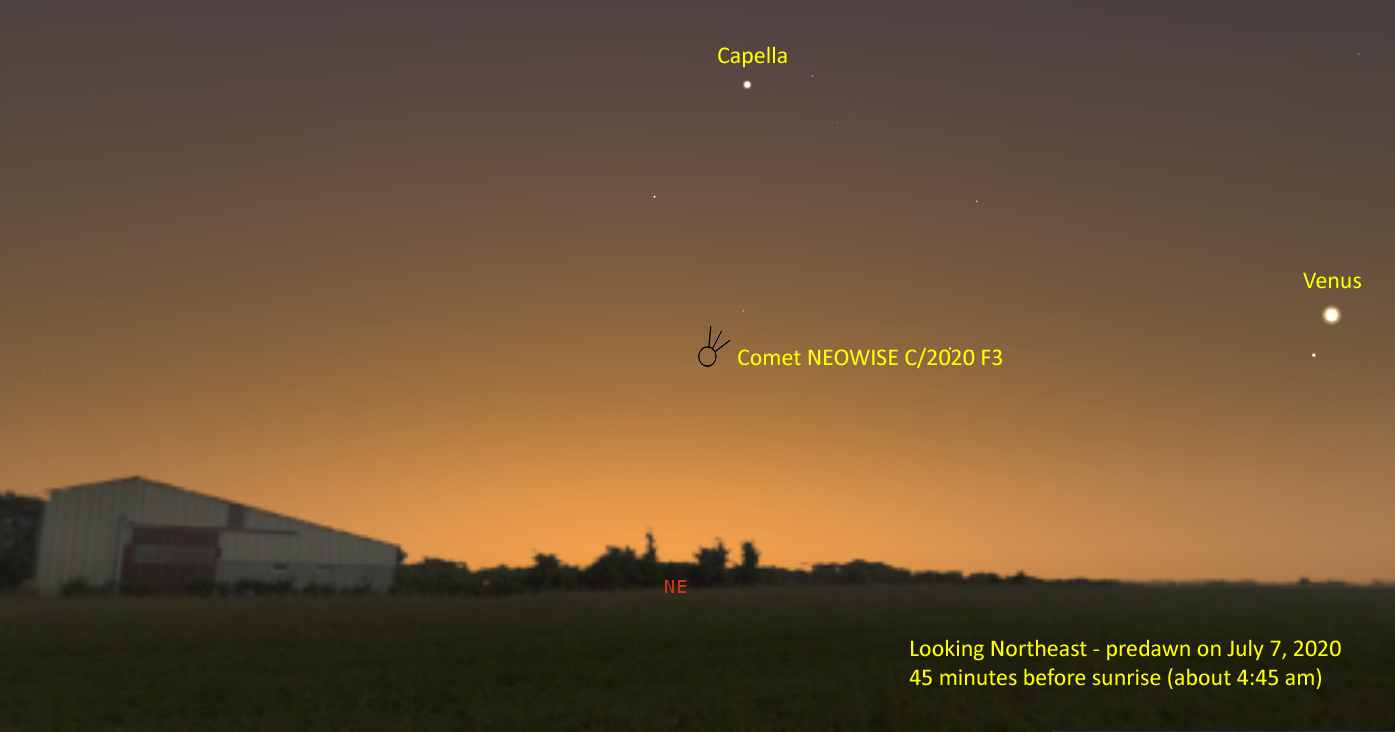
July 7, 2020
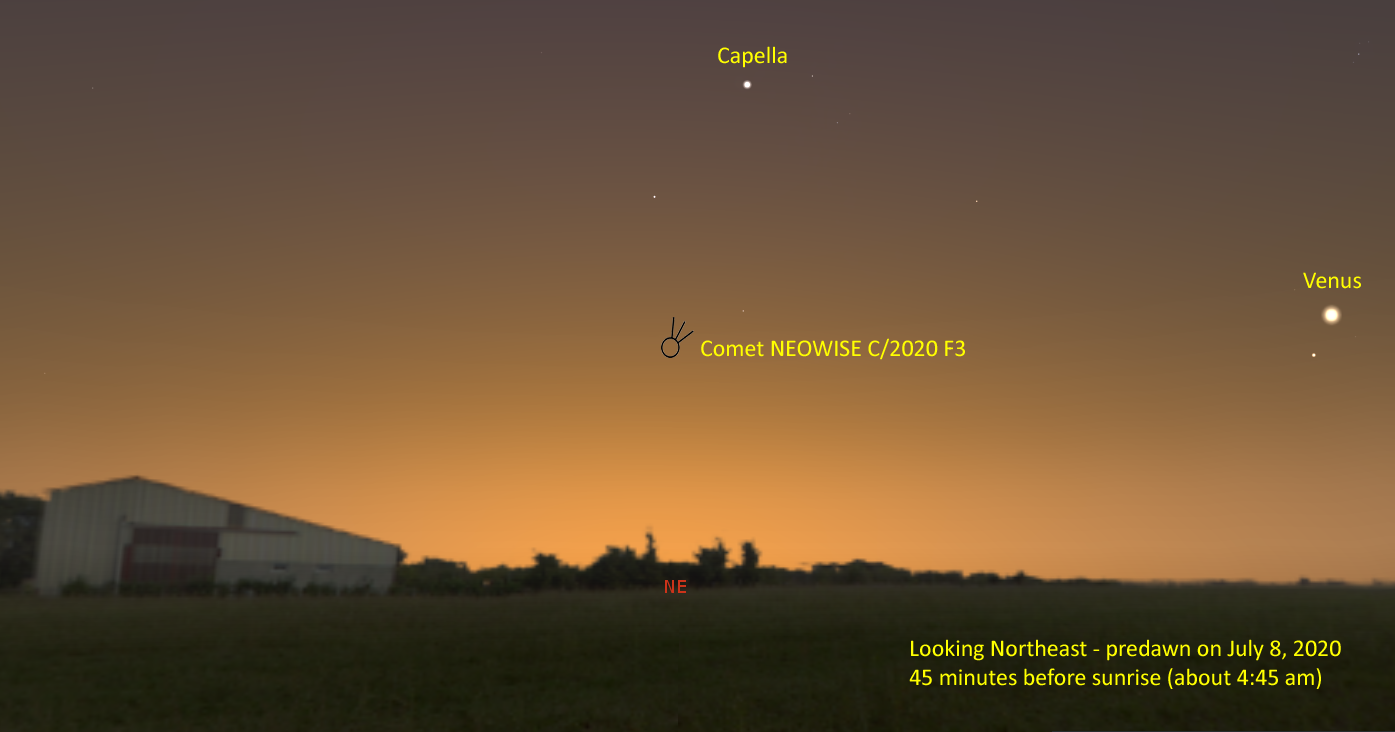
July 8, 2020
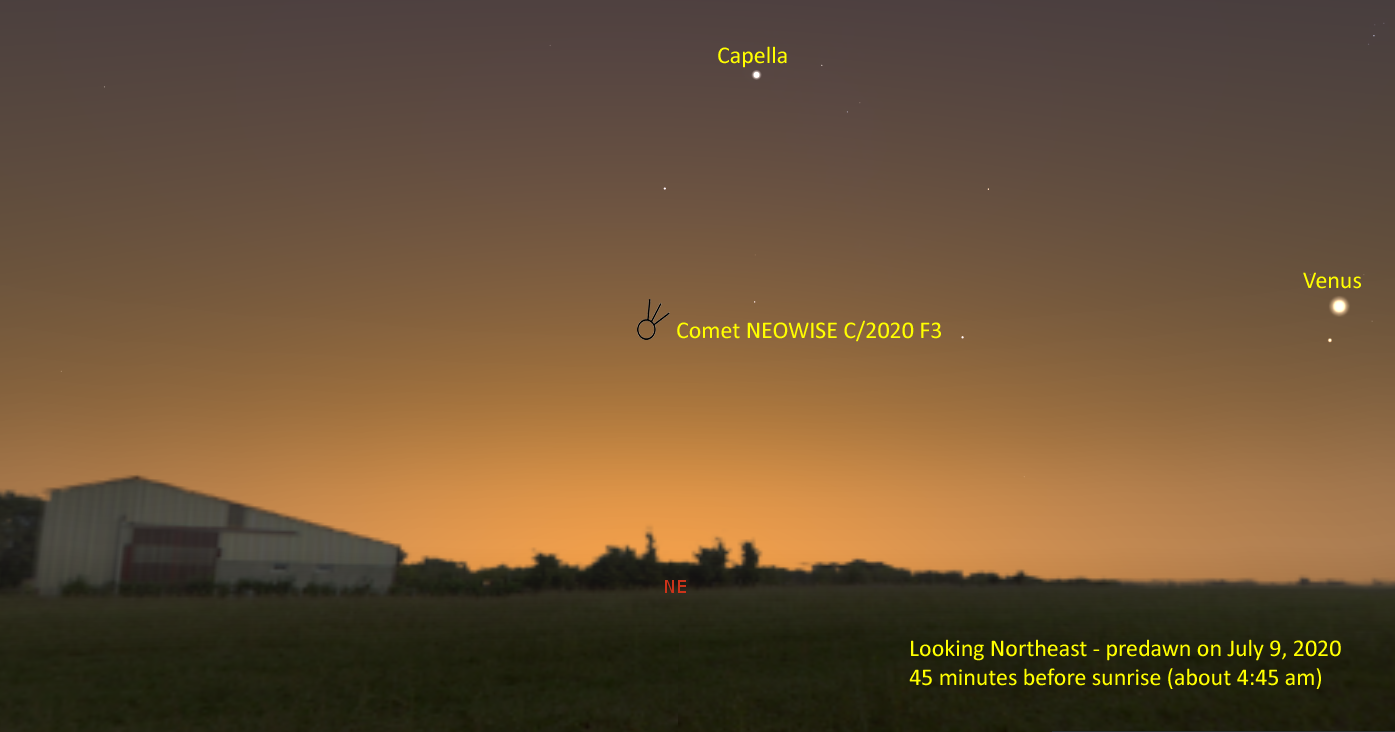
July 9, 2020
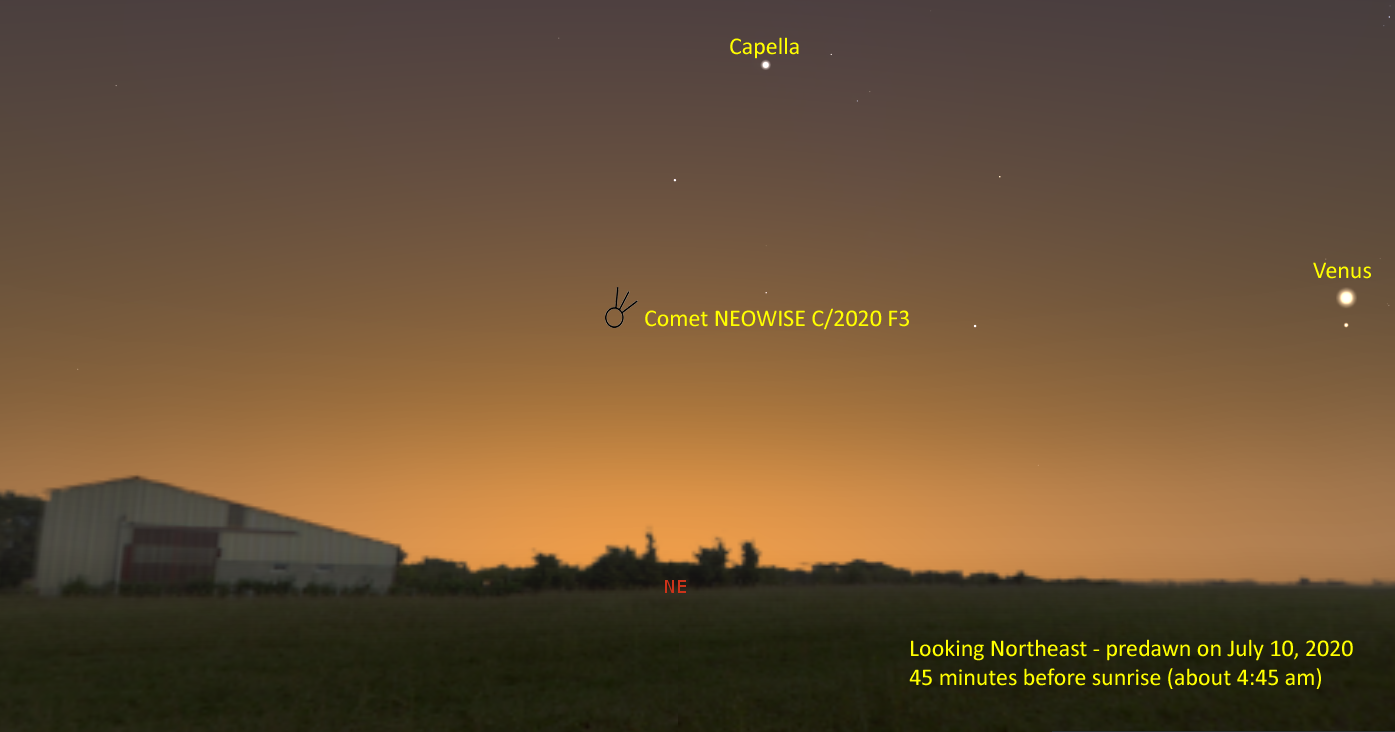
July 10, 2020
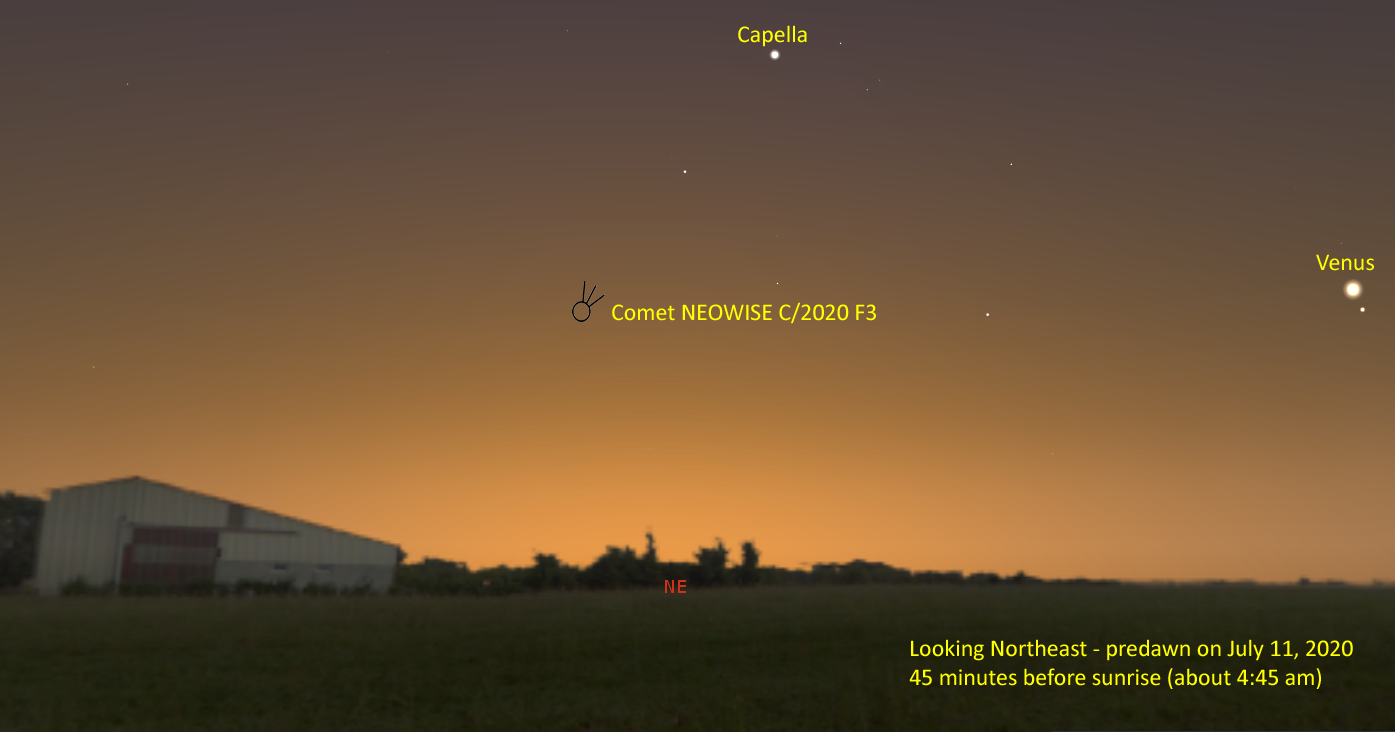
July 11, 2020
Photo credit: Dr. Jennifer West, Dunlap Institute for Astronomy, University of Toronto
Sky charts created with Stellarium, a free astronomy software package available at http://stellarium.sourceforge.net.
The view from Manitoba – How can I see it?
First thing to do is to set your alarm early. For the next week, this is a morning object, visible in the northeast just before sunrise. Find a spot with a good, clear view of the northeastern sky, without any trees, buildings, or city lights to obstruct the view. You should aim to be at your observing site by about 4:30 am. BY about 5:00 am, the sky will have brightened too much to be able to spot the comet. So, you have a narrow window of opportunity. (It goes without saying, you also need a sky free of clouds or haze.)
Looking northeast, the first thing you’ll spot is the brilliant planet Venus. Venus outshines everything else in the sky except the Sun and Moon, so it’s pretty unmistakable. Just below Venus is a star called Aldebaran. If you can see Aldebaran in your binoculars, you should be able to glimpse the comet, too.
The comet is about the same “height” as Venus is above the horizon, and off to the left. Use the charts below and the bright star Capella as a signpost to try and triangulate on where the comet is. It moves from night to night, so make sure you’re using the correct map!
With your binoculars, sweep the sky in the general area of the comet. You’re looking for a fuzzy patch of light – the tail might not be visible to the eye. Once you spot it in binoculars, see if you can see it unaided. It may be challenging, or it may be amazing, depending on whether the comet flares up in brightness or fades away.
If you have a camera and tripod, you can use it to try and capture an image, even if you can’t see the comet visually. Turn off autofocus and manually set your focus to infinity, and try exposures ranging from 1 second to 6 seconds. You will need a tripod to hold the camera steady enough to get a decent image. It’s doubtful that the camera on your mobile device will be able to image the comet, although you never know. There are apps that allow you to take star pictures with your camera that might be useful to try. If you’re artistically inclined, you can draw or sketch the comet using pencil, charcoal, or even watercolours. We’d love to see your images!




